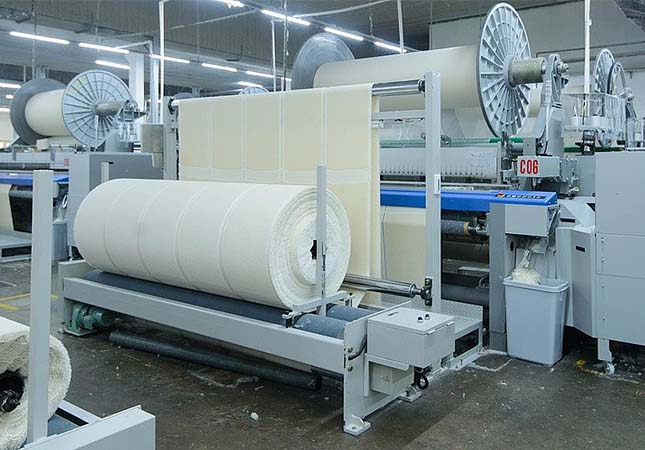In October 2020, the market suddenly surged, leading to a boom in orders for autumn and winter down jackets and cotton fabrics, mainly using nylon, rayon, and polyester materials. As a result, there was a sharp increase in demand, causing shortages and waiting lists in the market. This period became the most prosperous "honeymoon period" of the year for textile entrepreneurs, as their inventory of fast-selling products rapidly decreased and prices for some raw materials soared.

The skyrocketing market caused production companies to change their previous practices of reducing production and implementing rotational rests. They started operating at full capacity. The textile industry, being labor-intensive, relies on workers for operations. However, due to the market's prolonged downturn in the first three quarters, many textile entrepreneurs had to cut costs by reducing production, enforcing furloughs, and offering discounted wages, which resulted in a loss of workers.
The textile industry is a typical labor-intensive sector, and China has become the world's largest exporter of textiles due to its labor advantage. However, since 2012, as China's demographic dividend gradually disappears, labor costs have been increasing year by year.
Surveys indicate that wages for textile factory workers in the southeastern coastal regions are concentrated in the range of 5000-10000 yuan, while in the central and western regions, workers' wages are generally around 3000-6000 yuan.
Five years ago, the company's labor costs accounted for only 20%, but now it has reached 60%. Additionally, the company faces challenges such as employee instability, which leads to additional costs due to high turnover rates.
The increase in labor costs is attributed, on the one hand, to the rising cost of living caused by inflation. On the other hand, it is influenced by a decline in the labor force. For instance, the textile industry is considered tedious and laborious work, causing many workers from the "80s" generation to gradually retire, and those from the "90s" generation are less willing to work in this industry. Furthermore, the "00s" generation is even less interested in such jobs. Surveys have found that although business owners believe that overall salaries in the textile and apparel industry are not low, employees do not feel very satisfied with their compensation.
At the same time, not only labor costs are rising, but also the cost of raw materials is increasing. Previously, labor costs for textile enterprises were approximately 30%, and material costs were around 30%. Now, labor costs have exceeded 50%, even reaching 60%, while material costs are at 40%. As a result, it is difficult to achieve a profit margin of 5%, and only large-scale production can still generate profits, but price increases are hard to avoid.
The continuous increase in labor costs while product prices cannot be raised has squeezed profit margins, putting pressure on textile enterprises. Currently, some textile orders transferred overseas can be retained for a while, but it is challenging to maintain them for the long term.
Pain Points in the Upgrading and Transformation of the Textile Industry
Labor costs are soaring, especially in eastern enterprises, leading to two trends in China's textile and apparel industry chain. One trend is the migration from the eastern regions to the central and western regions, while the other is the migration from China to Southeast Asia and India, among other places.
Previously, many eastern cities, with the textile industry as one of their main sectors, have seen a decline in the proportion of the textile industry in their local industrial structure.
For instance, in 2015, the city of Huzhou in Zhejiang Province achieved a total industrial revenue of 408.24 billion yuan, with the textile industry accounting for 51.6 billion yuan. However, by 2019, the city's total industrial revenue had reached 491.69 billion yuan, while the textile industry only contributed 24.1 billion yuan. In another city, Shaoxing, Zhejiang, where the textile industry is one of the four major traditional industries, there has been a decline in the production of various textile and apparel subcategories in 2019 compared to 2015. For example, the total production of fabric in 2015 was 4.774 billion meters, but by 2019, it had decreased to 1.337 billion meters.
SUNTECH Textile Machinery offers a comprehensive range of products that cater to various fabric types. Our product lineup includes, but is not limited to, pinking machine, loom machine, weaving machine, beam truck, fabric cutting machine, motorized beam trolley, beam storage, and fabric inspection machine. With our innovative approach and extensive experience, SUNTECH Textile Machinery remains at the forefront of the textile industry. We warmly welcome requests for quotes and cooperation opportunities from you!




